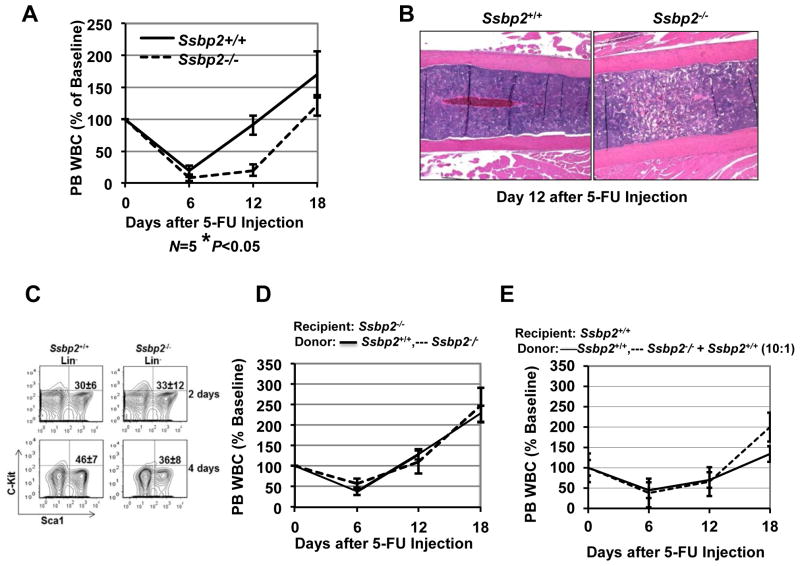Fig 4. Delayed hematopoietic recovery from cytotoxic stress in Ssbp2−/− mice.
A. Peripheral blood hematopoietic recovery is delayed in Ssbp2−/− mice. Hematopoietic reconstitution was monitored by serial peripheral blood counts in mice injected with a single dose of 5-FU (150 mg/kg, i.p.). Total WBC counts are shown as a percentage of the initial values for each group of mice. B. Hypoplastic BM on day 12 post 5-FU treatment in Ssbp2−/− mice. Hematoxylin and eosin staining of BM from Ssbp2-null mice and their WT littermates at day 12 post 5-FU injection. C. Early post 5-FU HSPC recovery is compromised in Ssbp2−/− BM. A representative flow cytometric analysis showing Lin Sca1+ cells in BM from Ssbp2−/− mice and their WT littermates 2 days and 4 days after 5-FU injection. D. WT BM rescues Ssbp2−/− mice from delayed post–5-FU recovery. Lethally irradiated WT and Ssbp2−/− cells were reconstituted with WT BM. Four months after transplantation, recipients were challenged with a single dose of 5-FU and hematopoietic recovery was followed with serial peripheral blood counts. WBC counts are shown as a percentage of the initial values for each group of mice. *p<0.05) as determined by unpaired two-tailed t-test between WT and Ssbp2−/− mice. Each experiment was conducted twice with a group of six age-matched mice per genotype. E. WT mice reconstituted with Ssbp2−/− enriched marrow show normal hematopoietic recovery after 5-FU treatment.

